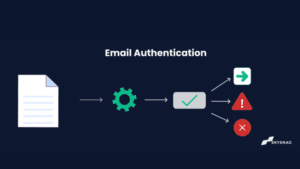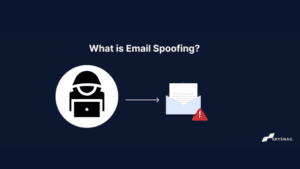Why Real-Time Email Verification Matters

Email is a fundamental part of personal and professional communication, making accuracy, security, and reliability critical. One effective way to achieve this is through synchronous verification. Here’s why synchronous or real-time verification is essential for emails:
Consistency and Reliability
Synchronous verification ensures that all aspects of an email—such as sender authenticity, content integrity, and recipient addresses—are verified simultaneously. This process guarantees that every email element is consistent and reliable, reducing the risk of undelivered or misdirected emails. It ensures that emails reach the intended recipients without errors.
Real-time Error Detection
With synchronous verification, any issues or errors within an email are detected in real-time. This immediate feedback allows senders to correct mistakes before the email is dispatched, ensuring that the message is accurate and complete. For instance, if an email address is incorrectly typed, synchronous verification can alert the sender instantly, preventing failed delivery.
Enjoy More Accurate Data
Email engagement metrics are important for helping you to optimize your emails and sending strategy, and monitoring deliverability—but not if they’re inaccurate. Keeping your email list clean with real-time verification will allow you to make use of more accurate data.
Invalid emails skew data by making your engagement metrics appear much lower than they really are. For example, if you send an email to 100 people and 50 people click, your click rate will be 50%. But, if in fact 25 out of those 100 recipients are invalid, that means your total number of recipients is actually 75, not 100. So your click rate would be 66%. Results that you may put down to bad content or design might actually be because of invalid emails.
Increase Engagement and Conversions
Engagement metrics such as clicks, forwards, and open rates help ISPs determine if you’re following best practices for your content and email list. Low engagement signals that either your recipients aren’t interested in your messages or that your email list contains many invalid addresses. Conversely, high engagement rates indicate that you’re sending emails to a valid list of recipients who are interested in your content.
Keeping a clean email list helps you avoid the spam folder, deliver more emails, and increase engagement. The cleaner your email list, the higher your deliverability, allowing you to reach more real recipients. This, combined with higher engagement rates, will naturally lead to increased conversion rates.
Improved Security
Email security is paramount in preventing phishing, spam, and other malicious activities. Synchronous verification plays a crucial role in this by verifying the authenticity of the sender and the integrity of the email content in real-time. This ensures that emails are not tampered with during transmission and that recipients can trust the source of the email.
Enhanced Coordination
In a business environment, effective communication among team members is critical. Synchronous verification ensures that all email communications are aligned and accurate, promoting better coordination. For instance, when scheduling meetings or sharing important updates, synchronous verification guarantees that all recipients receive the same accurate information simultaneously.
Efficiency and Productivity
Synchronous verification enhances the efficiency of email communications by reducing the need for follow-ups and corrections. When emails are verified synchronously, it minimizes the chances of errors and miscommunications. This leads to more efficient workflows and higher productivity, as teams can focus on their tasks without worrying about email issues.
Save on Sending Costs
By ensuring that emails are correct and secure from the outset, synchronous verification optimizes resource utilization. It reduces the time and effort spent on troubleshooting email problems and re-sending messages. This efficient use of resources translates into cost savings and more effective communication strategies.
Higher Quality Communication
Ultimately, synchronous verification leads to higher quality email communications. Whether it’s for marketing campaigns, customer support, or internal communications, ensuring that emails are accurate, secure, and reliable enhances the overall quality of interactions. This leads to better customer experiences, improved team collaboration, and a more professional image.
Conclusion
Synchronous or real-time verification is a critical practice for ensuring the integrity and effectiveness of email communications. By providing real-time error detection, enhancing security, and promoting consistency, it plays a vital role in maintaining the reliability of emails. In a world where email is a primary mode of communication, adopting synchronous verification is not just a best practice but a necessity for high-quality, secure, and efficient email interactions that ultimately results in stronger trust in digital interactions.
Access real-time email verification



